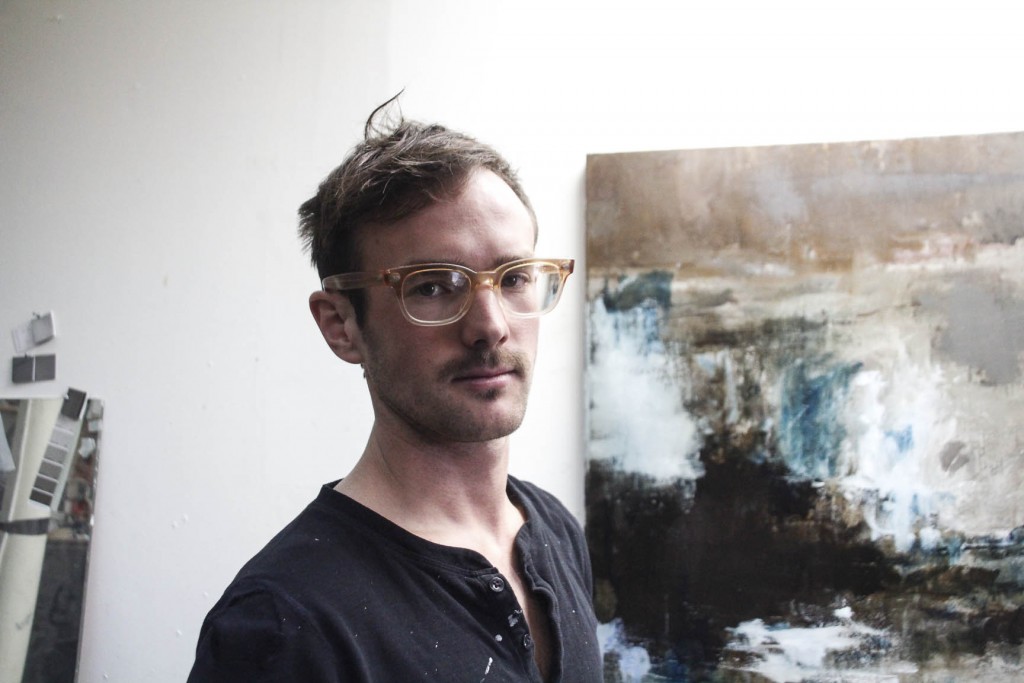by Jenn Corey
Timothy Wilson greets me in his Portland studio in signature soigné: dark weathered pants, tousled hair, and a scoured chamois shirt. His curated self might be described as “heritage revival” and belies the design flirtations of an otherwise seasoned fine artist. Wilson has made excursions into the world of raiment in the past with Rogues Gallery and L.L. Bean Signature, but today he is meeting me, primarily, as oil and sketch artist as he lifts a large tondo1 off a French pleat and honestly explains the origins of his studio.
He wouldn’t be there, on the Peninsula—on Brackett Street—were it not for a inheritance from a friend that has grandfathered him in at $300 a month. Thoughts about an in-town apartment are secondary to his canvases, which are carefully stacked around various antiqued props. Not least among his accoutrements is a camo knapsack to accommodate a metal easel for his most recent outings en plein air2 along the Maine shoreline and into the Maine woods.
Wilson trades largely in landscapes, but he has spit the bit of most contemporary clichés. Instead his works harken back to the nineteenth century sentiments of artists like Johan Christian Dahl and Caspar David Friedrich. The execution is different, with large swaths of expressive paint delivered on a palette knife, but he imbues the canvas with the same sense of the sublime in nature and with the potentiality of systems yet to come.
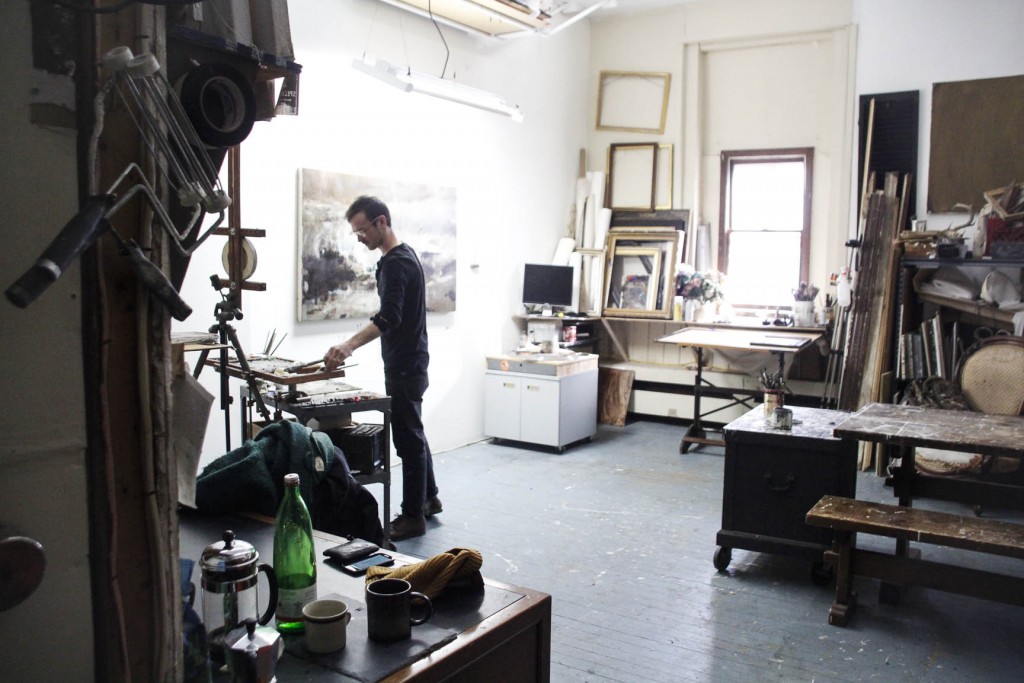
Jenn Corey: As an artist working primarily with Maine landscapes, what are the conditions required for production of your work? What sort of subjects are you seeking?
Timothy Wilson: In searching for a subject, for me it’s all about going with my gut and what I feel compelled to paint. So I know I am drawn to stormier more dramatic kinds of scenes. And I really enjoy—specifically in the last year or so in doing the plein air painting—trying to translate an experience onto a canvas. I find it boring to be outside on a pretty day. Nothing’s happening. It’s just blue skies and there’s no intrigue for me. So I really enjoy feeling the dense fog, or getting rained on, or having snow fall on me. It helps me develop the work in a richer way.
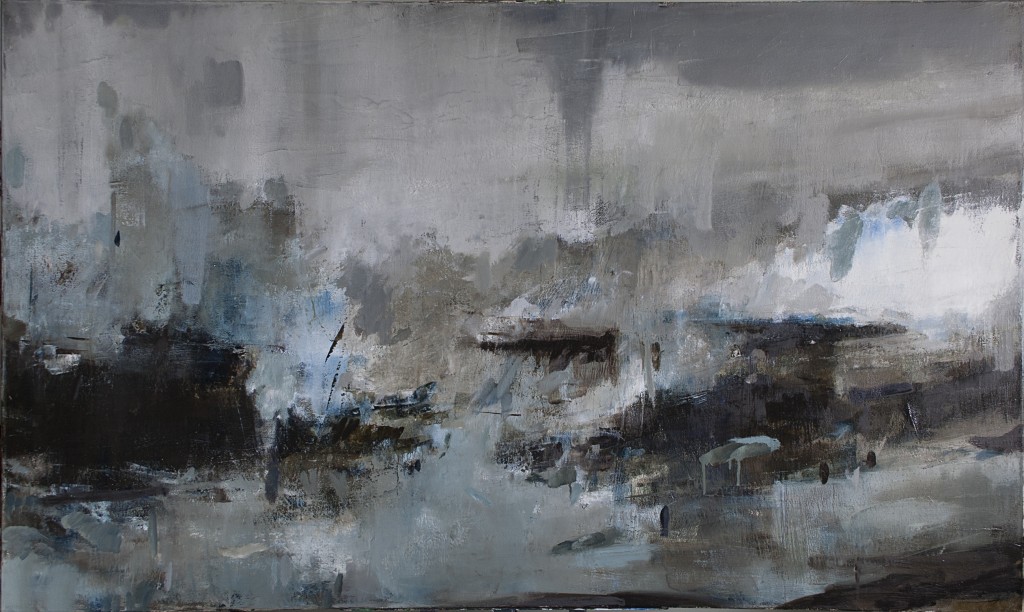
JC: You strike me as a bit of a Neo-Romantic, capital “R.” Have you ever heard the term “Sturm und Drang?” It’s this concept of expressive projection and German storm chasing.
TW: I don’t know the term, but I do relate a lot to the Romantic period just because that’s when science was starting to try and get rid of the mystery and intrigue of nature. And the Romantics just wanted to have this very emotional and dramatic experience and not think about the intricacies of science. They wanted to be overwhelmed.
JC: I can certainly see your concern with weather and weathering in your tonal use of light. Who are your influences there?
TW: The paintings of Jusepe Ribera have certainly influenced everything for me. And his painting style was known as tenebrism—which is an even more heightened chiaroscuro3. He would have these really dramatic light scenes. Tenebre is actually a term from the holy week where the candles are extinguished, and it’s pure blackness.
I’m also interested in how paintings age: so the pentimenti, which is where the paint layers erode and you can see where the artist originally had a hand in something and then changed it.4 And then those older paintings, they tried to cover all that up. The pentimenti are the natural processes of decay, and you can see all these layers that weren’t intended. You can see the process that was hidden.
JC: So, as you’ve been telling me, you’ve worked in New York and oscillated between different residencies, but you have said you self-conceive as a Maine artist. How long have you been living in Maine and what has caused you to stay here?
TW: I grew up here. And then I went to school in Providence and then did the obligatory New York thing. I came back here about seven years ago. I grew up in more rural southern Maine. My dad was a woodworker and my mom used to love taking care of old houses. So every few years we’d move to these really old, derelict barns and farmhouses and—not flip them—but got them into working order. And then as soon as they were almost habitable, as soon as we had running water, we would move. So I feel like that experience in these wonderful sprawling landscapes with stone walls and these rotting farmhouses just really made me feel in touch with Maine, and this kind of stark strength and beauty. I feel very compelled to be here. And now that I’m painting I really want to document those experiences that were so vivid in my upbringing.
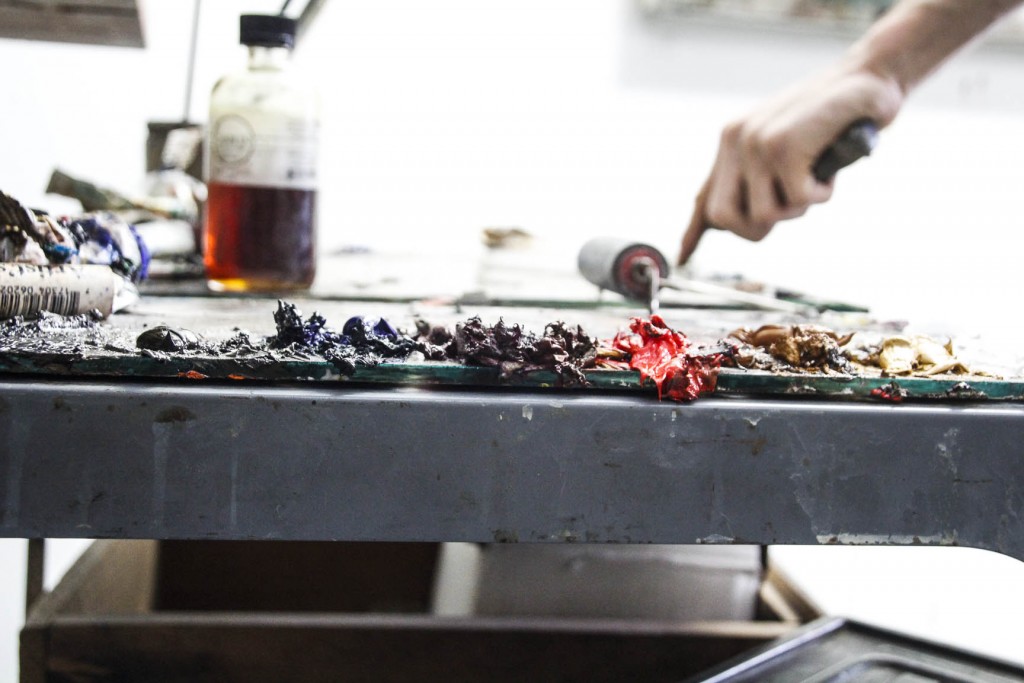
JC: You spoke a little bit about your exchanges with strangers leading to some unique opportunities to work outside of Maine. How did those come about?
TW: Right now I’m doing a solo show in Tribeca. A couple years ago I was staying at my friend’s studio in Bushwick; we had only really been in contact online, but she really saw something in my work. She wanted to try to help me out and wanted me to have access to the New York art scene. So she gave me her studio, and I lived there for a little while and worked. Suddenly in a couple weeks I’d met all these amazing artists in this same studio building—they were all the artists I’d been looking at in New York, and they were all in the same building. I’d been curated into a few different shows and had my own show I was going to be curating. I was also doing design work. I was going to be starting this project with this artist from Ralph Lauren looking to start her own company. It helps the momentum. Then I can come back to Maine and start to explore a different momentum here.
Similarly, I was able to sublet my studio to a friend this summer for the exact same period I was gone to RISD (Rhode Island School of Design). It felt good to help him get his footing in a place, since I was helped to get my footing in a place.
JC: What is your relationship with the New York art scene?
TW: I am very fortunate to have met the right people very quickly…New York certainly offers that kind of crazed you-never-know-who-you’re-going-to-meet aura. But I also see New York as somewhat stuck, and they like the independence of other states, like Maine. They really see a great integrity to the people here and who we are. I think our work stands out there as well. So it’s been nice to have that sort of networking happen very naturally and not try and force it. Like the gallery I’m at now: they’d been following my work for years and just naturally offered to show it. It’s been fruitful.
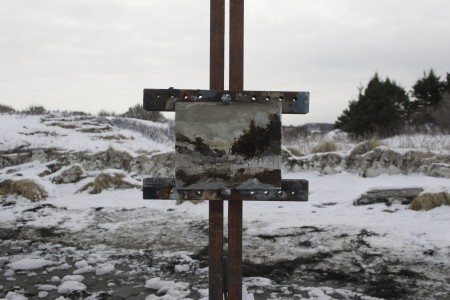
JC: Do you think there’s a certain caché in your mind or in the minds of others to working and selling in New York? What is made easier or more difficult by producing and selling in Maine?
TW: It’s just because in New York there’s more people. There’s more people that have more money and more people with an aesthetic who want to buy the work. That’s simply what it is. So I’m actually in the process of getting represented right now because the gallery that wants to represent me was frustrated because in Maine I was selling my work for almost half of what I was selling it for in San Francisco or New York—just because of the price margin. That shouldn’t be affected by the location. And I don’t want to go to those bigger cities to stay.
JC: Can you describe your relationship with the Corey Daniels Gallery and how that has helped your national sales?
TW: So that was a very fortuitous networking thing as well. I had just moved to Peaks Island for the winter and I was working at Rogues Gallery doing the creative design. I had just gotten a studio in town, and I was sharing it with my friend, [writer, curator, and assistant editor at Artforum] Annie Larmon, and she had just started curating [at Corey Daniels] and really felt there was something in my work that Corey would like. So she introduced me to him, and I had my first show there.
It was all just because she said, “You should check out this guy.” It was a very natural connection. I wasn’t emailing someone asking for an introduction. It just happened. And I think Corey is doing something very unique that isn’t anywhere else on this seacoast. He has such an amazing eye. And he’s juxtaposing this contemporary art that epitomizes the strength of these antiques that he also has in his place. And he has this great setting for it. That’s kind of what my work is about, too, and where my inspirations come about. It’s been working out really well. And he’s the gallery who wants to be representing me now.
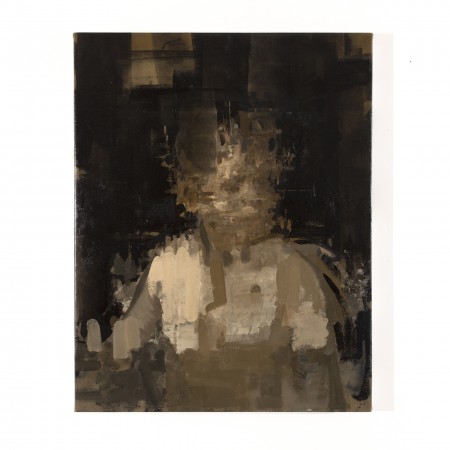
He has a great network of people because he was doing antique sales for about 30 years before he started the contemporary arts. They’re very well connected clients. So a lot of my work does go out of state, but then he also does a really great job of continual sales.
JC: When we were speaking earlier, you expressed some anxiety about painting landscapes but not catering to a strictly tourist market. Are you concerned your work not be considered pastoral? How do you mitigate that challenge?
TW: I just try to stick to what I’m doing. My sentiment is that a lot of people that might want to go somewhere and collect a little trinket relevant to the space—there’s nothing wrong with that at all. Certainly, there are people that want to make those things. That’s their hobby or what they do for fun—and there’s nothing wrong with that.
For me, it’s not a hobby. It’s not even like a job. It’s my life. So it’s somewhat degrading to be categorized in the same way. I don’t actively try and break out of that category, but for me it’s more about emotional activations and being compelled to paint something not-for-profit. Through that, I’ve been very lucky that people do buy my things. They feel compelled themselves to purchase. So it’s not that I’m avoiding association. It’s more whether the layperson walking down the street realizes a work is inspired or not. And that’s outside of my control.
I think a difficult aspect of that is with the vanity galleries, like the Portland Art Gallery on Middle Street owned by Maine magazine, that open up. I don’t know if you remember any of the articles about that?5 6 7 8
JC: Concerns about the pay-to-play model? Yeah, I definitely do.
TW: Yeah, that’s the vanity gallery. So, as people can afford membership there, they’re working on display. And because it’s in the downtown area, the tourists walk past and see that work in the gallery scene and think, well, that’s what painting should be here in Maine whether or not it’s just a glorified, uninspired tchotchke. So that’s part of my hesitation about pursuing landscape painting, but I’ve just got to deal with it. And hopefully there are those who realize there is something more integral to the work that I do—if there is.
JC: You talked about working and maybe living in a more rural setting, but it seems like you keep coming back to Portland when you’re in Maine. Is there a reason for that?
TW: For what I do, I am alone in a room or out in the woods somewhere for hours. I really enjoy being able to just walk down the street—not even interacting with people, necessarily—but just seeing familiar faces quickly to say hi. It makes me feel like I’m still human. And people still recognize me. There’s still a substance to me! Whereas the other things I do are so transcendental. It’s reaffirming to be recognized as a person with a form on Congress Street. I thrive upon that. And it’s convenient to where I’ve been keeping my studio. But I’m always thinking about where the next place is going to be. At the same time, I enjoy seeing the change in Portland. And seeing that I’m surviving that change. Surviving the gentrification.
To see more of Timothy Wilson’s work, visit http://www.timothypowerswilson.com/.
- A tondo is a circular, or round, painting, from the Italian rotundo ↩
- A French expression meaning “in the open air”. ↩
- Chiaroscuro is the Italian term for the use of strong contrasts of light and dark in art, achieving a sense of volume and/or mood. ↩
- Pentimenti is the Italian for repentance. ↩
- Bob Keyes, “New gallery draws competitors’ ire by charging artists for exposure,” Portland Press Herald (December 7, 2014): http://www.pressherald.com/2014/12/07/new-gallery-draws-competitors-ire-by-charging-artists-for-exposure/ ↩
- Peter Weed, “Pay-to-play gallery: The real issue,” LiveWorkPortland (January 11, 2015): http://www.liveworkportland.org/blog/pay-play-gallery-real-issue ↩
- David Carkhuff, “How can galleries stay afloat in Portland’s changing art market?” Portland Phoenix (January 28, 2015): http://portlandphoenix.me/2015/01/28/features/how-can-art-galleries-stay-afloat-in-portlands-changing-market/ ↩
- Bill Lundgren, “As (Art Collector) Maine Goes…,” The Bollard (March 3, 2015): http://thebollard.com/2015/03/03/as-art-collector-maine-goes/ ↩

